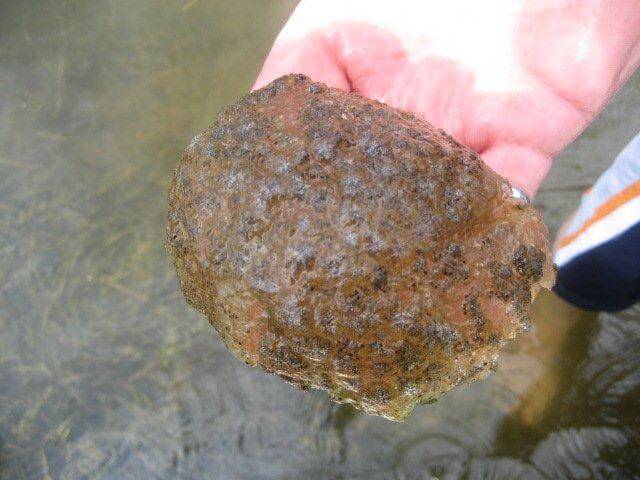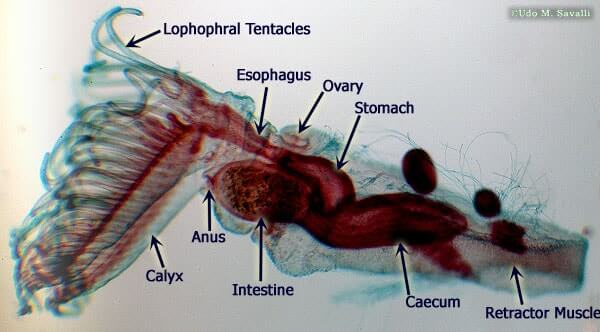Posted: October 7, 2015
Meet Your Local Bryozoan Colony

Some of the animals that call our rivers and lakes home don’t look like animals at all! This time of year people start noticing unusual jelly-like blobs along their shorelines which are actually colonies of small animals called bryozoans.
Feature photo: Bryozoan colony in Lavergne Bay, courtesy of Pat Tait.
Written by Meaghan Murphy
Bryozoans are aquatic invertebrates that mostly live in colonies. They feed on algae and other plankton suspended in the water column by filtering the water much like mussels and clams.
In the spring, tiny individual bryozoans (zooids) less than 1 mm in length settle onto surfaces in our rivers, streams and lakes and start reproducing to form colonies over the course of the summer. By late summer and early fall, the colonies have grown large enough (5-30 cm) that we start to notice them. In late fall, the colonies die and release seed-like structures (statoblasts) into the water column that await the return of spring. Spring’s warmer temperatures, higher light, and a greater abundance of algae (food source) trigger these organisms to settle and begin the process again. Each seed-like structure can form a new colony.
Bryozoans typically settle on submerged rocks, tree branches and docks in shallow waters along the shoreline. Many fish, aquatic insects, and snails will feed on bryozoans…as well as the occasional raccoon!
The next time you are wading into the water this fall, keep a look out for these cool creatures!
< Previous post Next post >

